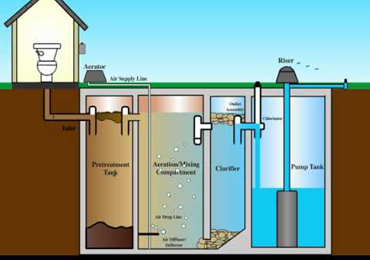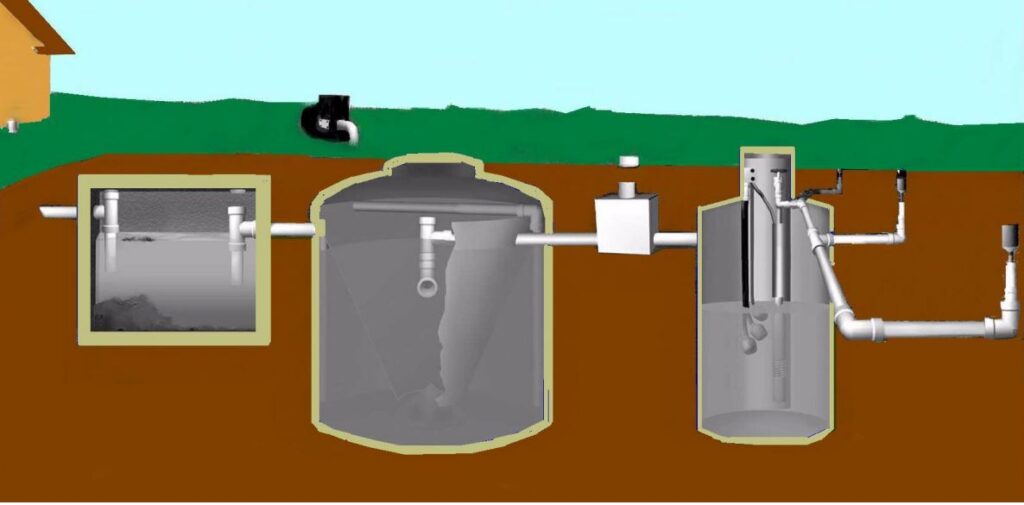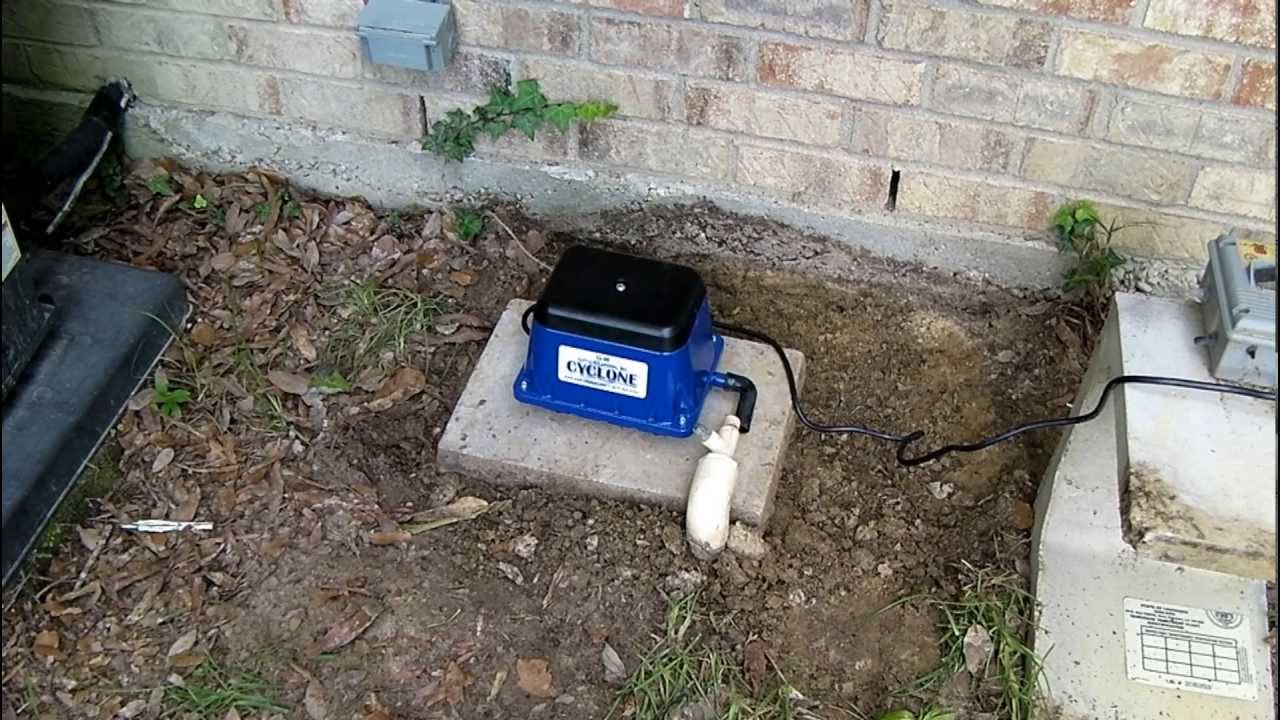In this informative article, you will discover a comprehensive guide to effectively maintaining your aerobic septic system pump replacement. Whether you’re a homeowner or a professional in the septic system industry, this article will provide you with valuable insights and practical tips to ensure the efficient functioning of your septic pump. With a focus on maintenance techniques and best practices, this guide aims to simplify the process of maintaining your aerobic septic system pump replacement, enhancing its longevity and performance.
Understanding Aerobic Septic Systems
What is an aerobic septic system?
An aerobic septic system, also known as an aerobic treatment unit (ATU), is a wastewater treatment system that relies on oxygen and microorganisms to break down organic matter. Unlike traditional septic systems that function anaerobically, aerobic septic systems introduce oxygen into the system to promote the growth of aerobic bacteria, which are more efficient at decomposing waste.
How does an aerobic septic system work?
Aerobic septic systems work by allowing wastewater to flow into a tank where it is mixed with a pre-settling compartment. In this compartment, solid matter settles to the bottom while lighter substances float to the top. The partially treated wastewater then moves into an aeration chamber, where compressed air is introduced to promote the growth of aerobic bacteria.
These bacteria quickly break down the remaining organic matter, effectively treating the wastewater. From the aeration chamber, the treated water flows into a settling chamber where any remaining solids settle to the bottom. Finally, the clarified wastewater is discharged into a drain field for further filtration and absorption into the soil.
Why is proper maintenance important?
Proper maintenance is crucial for the efficient functioning of aerobic septic systems. Regular maintenance ensures that the system continues to treat wastewater effectively, preventing the buildup of harmful substances and potential damage to the system. Neglecting maintenance can lead to pump failure, clogging, and costly repairs.
Signs of Pump Failure
Common signs of pump failure
Detecting signs of pump failure is essential to address issues before they escalate. Some common signals of pump failure in an aerobic septic system include:
- The alarm system is triggered frequently.
- Slow drainage or backup of wastewater in sinks, toilets, or drains.
- Foul odors emanating from drains or the septic system.
- Unusually lush, wet, or spongy patches in the drain field.
- Gurgling noises coming from the drains.
- High water levels in the aeration chamber.
How to identify pump failure
To identify pump failure, it is important to conduct a thorough inspection. Begin by checking the alarm system to see if it has been triggered due to a high water level or other issues. You should also observe the flow rate of wastewater and look for any signs of backup or slow drainage. If foul odors are present or the drain field is unusually wet, these can also indicate pump failure.
It is recommended to visually inspect the pump itself for any visible signs of damage or wear. Additionally, measuring the water levels in different compartments of the system can provide valuable insights into whether the pump is functioning properly.
Consequences of pump failure
If pump failure is not addressed promptly, it can lead to serious consequences for both the aerobic septic system and the surrounding environment. When the pump fails, untreated wastewater can accumulate in the tank, causing the system to become overwhelmed and resulting in backups and overflows.
These backups can lead to the contamination of groundwater and surface water, posing health risks and polluting the environment. Furthermore, the failure to adequately treat wastewater can also damage the internal components of the septic system, leading to costly repairs or the need for a complete system replacement.
Choosing the Right Replacement Pump
Factors to consider when selecting a replacement pump
When choosing a replacement pump for your aerobic septic system, several factors should be taken into consideration:
- Flow rate requirements: Determine the average daily flow rate of wastewater in your household to ensure the replacement pump can handle the required volume.
- Voltage compatibility: Check the voltage requirements of the existing system to select a replacement pump that is compatible with your electrical setup.
- Durability and lifespan: Look for a pump that is built to withstand the harsh conditions within a septic system and has a long lifespan.
- Manufacturer’s reputation: Research different manufacturers and select a reputable brand known for reliable and efficient pumps.
- Warranty and customer support: Ensure the replacement pump is backed by a warranty and reliable customer support in case any issues arise.
Types of pumps suitable for aerobic septic systems
Different types of pumps are suitable for use in aerobic septic systems. The most commonly used types include:
- Submersible pumps: These pumps are designed to be completely submerged in the wastewater or effluent. They are sealed to prevent water damage and can be used with aerobic septic systems that have aeration chambers.
- Lift pumps: Also known as effluent pumps, lift pumps are used to transport wastewater from the septic tank to the drain field. They are particularly useful when the drain field is located at a higher elevation than the septic tank.
- Jet pumps: Jet pumps are versatile and can be used in both shallow and deep well applications. They are capable of pumping wastewater at high pressures and can be used when the drain field elevation is significantly lower than the septic tank.
Sizing considerations for replacement pumps
Proper sizing of the replacement pump is vital for optimal performance of the aerobic septic system. Factors to consider when determining the appropriate size include the number of bedrooms in the house, the average daily water usage, and the characteristics of the drain field.
Consulting with a septic system professional or referring to the manufacturer’s guidelines can help ensure the replacement pump is correctly sized for your specific system.
Preparing for Pump Replacement
Gathering the necessary tools and equipment
Before replacing the aerobic septic system pump, it is important to gather all the necessary tools and equipment. Some common tools and materials you may need include:
- Adjustable wrench
- Screwdriver
- Plumber’s tape
- PVC pipes and fittings
- Replacement pump
- Safety gloves and goggles
- Teflon tape
- Pump sealant or silicone caulk
- Socket set
By having these tools readily available, you can streamline the pump replacement process and minimize any potential delays.
Ensuring safety precautions
When working on an aerobic septic system pump replacement, it is essential to prioritize safety. Here are some important safety precautions to keep in mind:
- Wear protective gear: Use safety gloves and goggles to protect your hands and eyes from potential hazards.
- Turn off electrical power: Before handling any electrical components, make sure to shut off the power to the septic system. This will prevent the risk of electric shock.
- Ventilate the area: If the work is conducted in a confined space, ensure proper ventilation to avoid exposure to harmful gases and fumes.
- Follow manufacturer’s instructions: Read and follow the manufacturer’s instructions for both the replacement pump and any tools or equipment being used.
By taking these safety precautions, you can minimize the risk of accidents and ensure a safe working environment.
Shutting off power to the system
Before commencing the pump replacement process, it is crucial to shut off the power supply to the aerobic septic system. This can be done by locating the circuit breaker or disconnect switch that controls the system’s electrical components.
Ensure that the power is completely turned off before proceeding with any work on the system. This step helps to prevent electrical accidents and ensures the safety of both the individual performing the replacement and the system itself.

Steps to Replace the Aerobic Septic System Pump
Step 1: Removing the old pump
To begin the pump replacement process, the old pump must be removed from the aerobic septic system. Follow these steps:
- Shut off the power: Ensure that the electrical power to the system has been disconnected.
- Locate the pump: Find the location of the pump within the septic system, typically in the aeration chamber or pumping chamber.
- Disconnect the pump: Begin by disconnecting any electrical connections to the pump. Depending on the type of pump, there may also be plumbing connections that need to be detached.
- Remove the pump: Carefully remove the old pump from its mounting or housing, taking care not to damage any surrounding components.
Step 2: Inspecting the tank and components
With the old pump removed, it is essential to inspect the tank and other components for any signs of damage, wear, or clogging. This step ensures that the system is in good condition before installing the new pump. Inspect the tank walls, electrical connections, and plumbing fittings for any issues that need to be addressed.
Clean any debris or buildup that may have occurred over time and ensure that all components are in proper working order. This inspection will help maintain the longevity and efficiency of the system.
Step 3: Installing the new pump
Once the inspection is complete, it is time to install the new pump into the aerobic septic system. Follow these steps:
- Prepare the new pump: Ensure that the new pump is compatible with the system’s electrical and plumbing requirements. Read the manufacturer’s instructions to properly prepare the pump for installation.
- Position the pump: Place the new pump in the designated area and secure it according to the manufacturer’s instructions. This may involve attaching it to the mounting bracket or housing.
- Reconnect electrical and plumbing connections: Carefully connect the electrical wires and plumbing fittings, ensuring that they are securely fastened.
- Test the connections: Before proceeding, confirm that all connections are tight and secure, eliminating the risk of leaks or loose wires.
Step 4: Testing the new pump
After the new pump has been installed, it is essential to test its functionality to ensure proper operation. Follow these steps:
- Restore power supply: Once the pump is securely installed, switch the power back on to the aerobic septic system.
- Observe pump operation: Observe the pump to ensure that it starts and runs smoothly. Check for any abnormal sounds or vibrations.
- Test water flow: Run a sufficient amount of water into the system to check the pump’s ability to handle the wastewater flow rate. Monitor the effluent levels to ensure proper drainage and functioning of the system.
- Check alarm system: If your septic system is equipped with an alarm system, test it to ensure it is functioning properly.
Step 5: Properly disposing of the old pump
Once the replacement pump is installed and tested, it is necessary to dispose of the old pump properly. Depending on local regulations and guidelines, the best course of action may involve contacting a qualified waste management service or recycling facility to handle the disposal of the old pump. Proper disposal helps protect the environment and prevents any potential harm.
Maintaining the Septic System Pump
Regular inspection and cleaning
Regular inspection and cleaning are vital to maintaining the health and function of the aerobic septic system pump. This includes:
- Visual inspection: Periodically check the pump and other components for any signs of wear, damage, or potential issues. Look for leaks, loose connections, or buildup of debris.
- Clean filters and screens: If the septic system includes filters or screens, clean them according to the manufacturer’s instructions. This prevents clogging and allows for optimal flow.
- Remove solids: If solid waste collects in the tank or compartments, pump it out regularly to prevent accumulation and potential damage to the system.
- Check and clean aerators: Ensure that the aerators are clean and free of any blockages. Aerators play a crucial role in distributing oxygen and supporting the growth of aerobic bacteria.
Monitoring fluid levels
Monitoring fluid levels in the aerobic septic system is another essential maintenance task. Keep track of the effluent levels to ensure that the pump is effectively moving wastewater through the system. If levels are consistently high or low, it may indicate an issue with the pump or other components that should be addressed promptly.
Proper maintenance of other components
In addition to the pump itself, it is crucial to maintain other components of the aerobic septic system. This includes regularly checking the aerator, alarm system, and floats to ensure they are functioning properly. Any malfunctioning components should be repaired or replaced promptly to avoid further complications.

Troubleshooting Common Issues
Loss of power or electrical issues
If the aerobic septic system experiences a loss of power or electrical issues, several steps can be taken to troubleshoot the problem:
- Check the breaker or disconnect switch: Ensure that the breaker switch for the septic system is turned on or that the disconnect switch has not been tripped.
- Verify power supply: Use a voltmeter or test light to check if power is reaching the system. If not, the issue may lie with the electrical connections or the power source.
- Inspect the pump’s electrical connections: Confirm that all electrical connections are secure and not damaged. Repair or replace any faulty connections if necessary.
- Consult an electrician: If all else fails, it may be necessary to consult an electrician to identify and fix any electrical issues.
Pump becoming clogged or jammed
If the pump becomes clogged or jammed, follow these steps to troubleshoot the issue:
- Disconnect power to the system: Shut off the power to the aerobic septic system to ensure safety while working on the pump.
- Inspect the pump: Visually inspect the pump for any visible signs of clogging or obstruction. Remove any debris or foreign objects that may be blocking the pump.
- Check the impeller and intake lines: Inspect the impeller and intake lines for clogs or debris. Clean or replace any components as necessary.
- Restart the system: Once the clog or jam has been cleared, restart the aerobic septic system and observe its operation. If the issue persists, further investigation or professional assistance may be required.
Alarms and error codes
If the alarm system of the aerobic septic system is triggered or error codes are displayed, it indicates a potential issue that needs to be addressed. Follow these steps to troubleshoot alarms and error codes:
- Refer to the system manual: Consult the septic system’s manual or manufacturer’s guidelines for information specific to the alarm system and error codes. This will provide insight into what the alarm or codes indicate.
- Inspect the system and components: Conduct a visual inspection of the aerobic septic system, paying close attention to the alarm system and associated components. Look for any visible signs of malfunction or damage.
- Check electrical connections: Ensure that all connections to the alarm system and related electrical components are secure. Repair or replace any faulty connections if necessary.
- Contact a professional: If the issue persists and cannot be resolved through troubleshooting, it is advisable to contact a professional septic system technician for assistance.
Hiring a Professional vs. DIY Pump Replacement
Advantages of hiring a professional
While some homeowners may choose to replace the septic system pump themselves, there are several advantages to hiring a professional for the job:
- Expertise and experience: Professional septic system technicians have the knowledge and experience to handle pump replacements efficiently and effectively.
- Safety considerations: Professionals are well-versed in safety measures and protocols, reducing the risk of accidents or damage to the septic system.
- Time and convenience: Hiring a professional allows homeowners to save time and avoid the potential complications and frustrations of attempting a DIY replacement.
- Warranty coverage: Professionals often offer warranties on their work, providing added peace of mind in case any issues arise after the replacement.
Considerations for DIY pump replacement
While hiring a professional is generally recommended, some homeowners may still opt for a DIY pump replacement under certain circumstances. Consider the following factors before deciding to take on the task yourself:
- Skill and knowledge: Assess your own skills and familiarity with septic systems. If you have experience with plumbing and electrical work, a DIY replacement may be feasible.
- Time availability: Pump replacement can be time-consuming, especially for those without prior experience. Ensure you have sufficient time set aside to complete the task.
- Tools and equipment: Evaluate whether you have access to the necessary tools and equipment required for the replacement process. This includes both plumbing and electrical tools.
- Local regulations and permits: Research and ensure compliance with local regulations and permit requirements. Some areas may require professional installation or inspections.
When to seek professional help
In certain situations, it is strongly recommended to seek professional help rather than attempting a pump replacement yourself. These circumstances include:
- Lack of experience or knowledge: If you have little to no experience with septic systems, it is advisable to leave the pump replacement to professionals who are trained in this area.
- Complex system configurations: If your aerobic septic system has complex configurations or unique components, professional expertise will ensure the replacement is done correctly.
- Safety risks: If there are safety risks involved in accessing and working on the pump or septic system, it is best to hire a professional who is equipped to handle these challenges.
Ultimately, the decision to hire a professional or pursue a DIY pump replacement should be based on individual circumstances, skill level, and comfort level with the task at hand.

Cost Considerations in Pump Replacement
Estimating the cost of a replacement pump
The cost of replacing an aerobic septic system pump can vary depending on factors such as the type of pump, the brand, and the specific requirements of the system. On average, homeowners can expect to spend between $500 and $2,000 for a replacement pump. However, it is important to keep in mind that additional costs may be incurred during installation or when addressing any unforeseen issues.
Additional expenses to consider
In addition to the cost of the replacement pump, there are other potential expenses to consider when undertaking a pump replacement:
- Professional fees: If hiring a professional for installation, fees for their services will need to be factored into the overall cost.
- Permit fees: Depending on local regulations, obtaining permits for septic system work may come with associated fees.
- Repair or replacement of other components: During the pump replacement process, it may be necessary to repair or replace other components of the septic system, incurring additional costs.
- Maintenance products and supplies: Regular maintenance of the system requires the purchase of specific products and supplies to keep it functioning optimally.
It is important to budget for these additional expenses to ensure a comprehensive pump replacement process.
Factors influencing the overall cost
Several factors can influence the overall cost of a pump replacement for an aerobic septic system:
- Type and quality of replacement pump: Different types of pumps and varying levels of quality come with different price points. Higher quality pumps may have a higher initial cost but could provide better performance and durability in the long run.
- Accessibility and complexity of the septic system: If the septic system is difficult to access or has complex configurations, additional labor costs may be involved.
- Geographic location: The cost of living and labor rates in your area can impact the overall cost of the pump replacement.
- Periodic maintenance and inspections: Regular maintenance, including inspections and cleaning, is necessary to prevent pump failure and ensure the system’s longevity. These maintenance activities can add to the overall cost over time.
By considering these factors and budgeting accordingly, homeowners can plan for a successful pump replacement within their financial means.
Conclusion
Maintaining an efficient aerobic septic system requires regular inspection, proper pump replacement, and ongoing maintenance. By understanding how aerobic septic systems work and recognizing the signs of pump failure, you can take proactive steps to ensure the continued functionality of your system.
When choosing a replacement pump, consider factors such as flow rate requirements, pump type, and sizing considerations. Taking safety precautions, such as gathering the necessary tools and shutting off power, is essential before commencing the pump replacement process.
Proper maintenance, monitoring fluid levels, troubleshooting common issues, and knowing when to seek professional help are key elements in effectively caring for your septic system pump. Additionally, considering cost considerations and actively budgeting for pump replacement and ongoing maintenance will help ensure the long-term efficiency of your aerobic septic system.
By following this comprehensive guide, you can successfully replace your aerobic septic system pump and maintain a well-functioning system for years to come.

